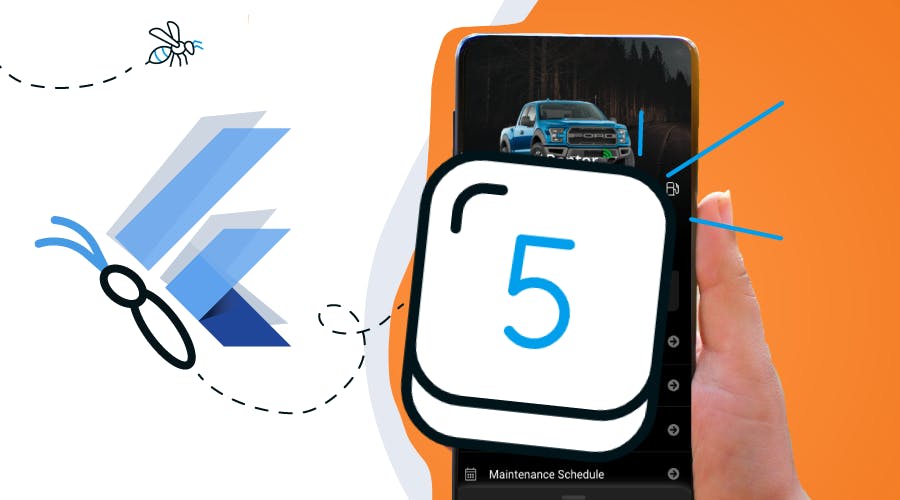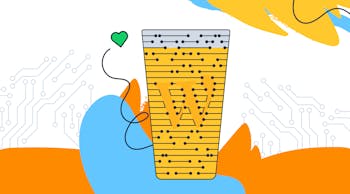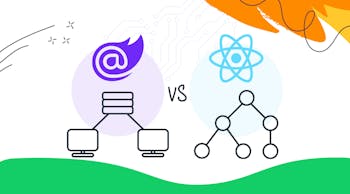If you’re planning to invest in mobile app development, you need to know the difference between Flutter and React Native, two cross-platform frameworks that dominate the app development industry.
Although both are powerful open-source frameworks developers can use to create cross-platform mobile and desktop apps, Flutter has distinct advantages over React Native. For instance, developers can use Flutter to develop applications for Windows, Mac, Android, iOS, Linux, and the web from one codebase. Flutter also offers near-native performance due to the Dart programming language.
All in all, there are five reasons to choose Flutter for your next mobile application. Read on to learn what these five reasons are and why Flutter is a better choice than React Native.
FLUTTER OFFERS BETTER PERFORMANCE
First of all, Flutter offers lightning-fast performance.
Unlike React Native, which always adds JavaScript to your application, Flutter doesn’t use JavaScript runtimes. Instead, it constructs a two-way communication stream between native code and Dart. In other words, Flutter offers near-native performance because it runs on compiled code.
This means Flutter has a much higher execution speed than React Native. Even though Facebook’s Hermes boosts JavaScript execution speed by precompiling it to efficient byte-code during build-time, it’s still not as efficient as Flutter. The byte-code still takes some time to compile since a dynamically typed interpreted language like JavaScript is generally tricky to turn into byte-code.
FLUTTER IS USER-FRIENDLY
Flutter is one of the most accessible platforms to learn. In fact, Flutter claims in its documentation that developers don’t need to have prior programming experience to get started. As long as your developers are familiar with the basic programming principles and object-oriented programming concepts, they’re good to go.
What’s more, Flutter also has a user-friendly layout system that will further enhance efficiency. Unlike React Native, which requires you to understand CSS FlexBox syntax, Flutter uses a widget tree-based layout system. This means developers define widgets in a tree-like data structure-no CSS FlexBox knowledge required. The widget-tree system is much more intuitive than CSS FlexBox syntax, making Flutter accessible to a broader range of developers.
Flutter’s layout will also speed up the app development process since developers can assign varying Dart variables to widgets to sort them into different groups.
FLUTTER GIVES DEVELOPERS TOTAL CONTROL
Unlike other frameworks, Flutter gives you control over every pixel on the screen. That’s because Flutter owns every pixel on the screen, while other cross-platform frameworks like React Native use Android and iOS operating systems to draw the interface.
Flutter is open-source, while React Native and other frameworks that rely on Android and iOS are closed-source. This means that Flutter has less baggage, making it easier to use in the long run. By using Skia to render and draw everything, your developers can bring their own twist to app development instead of trying to twist Android and iOS-native elements to fit a particular look.
In short, Flutter gives developers the ability to implement any design they want without coming up with costly, time and energy-consuming loopholes.
FLUTTER OFFERS GREAT PORTABILITY
Flutter’s compatibility with Skia also makes Flutter an extremely portable platform. This means developers can transfer software, coding, and other aspects of their projects to Android, iOS, Linux, Windows, Mac, Fuchsia (Google’s upcoming operating system), and Web.
In contrast, React Native only officially supports iOS and Android platforms. Although there are React Native forks that support desktop platforms, such as Proton Native, they are not always actively updated or maintained.
Flutter’s compatibility with Skia allows developers to:
- Render user interfaces on almost any platform
- Keep the user interface the same design across different platforms
- Have a better cross-platform experience
Your developers will also be able to make adjustments for different platforms. Controls like Cupertino widgets, for instance, allow you to incorporate iOS-style switches, tab bars, and other elements into your user interfaces regardless of platform.
FLUTTER HAS POWERFUL TOOLS
Finally, Flutter is a premier choice for your next mobile application because it offers developers a vast arsenal of potent tools, such as:
- Visual Studio Code, which allows developers to debug and edit code.
- Flutter SDK contains all of the command tools and packages you need to create cross-platform Flutter apps.
- Widgets that can help your developers achieve almost any goal.
SUMMARY
Flutter and React Native are both solid picks for your next mobile application. However, if you’re looking for a streamlined and user-friendly choice that gives developers total control over the design process, you should choose Flutter for your next mobile application project.
Compared to React Native, Flutter is faster and easier to use for developers. It has a tree-like data structure that’s easy to learn and organize projects with. Developers will also find it easier to use Flutter to implement designs from scratch since Flutter owns and controls every pixel you see on the screen. In contrast, React Native uses iOS and Android operating systems to render the interface, making it challenging to implement unique user interfaces. Finally, Flutter offers great portability across many different platforms and provides an arsenal of tools that your developers can use to achieve almost anything.
If you have any questions about Flutter, React Native, or another mobile app development platform, connect with INVENTIVE today to set up a 30-minute consultation. We’re always happy to help.









